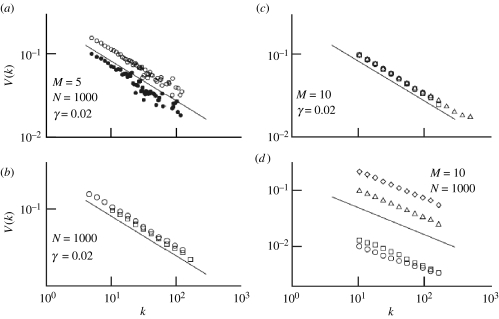Figure 3.
The adaptive network of coupled oscillators studied by Zhou & Kurths organizes towards a topology in which the incoming weight Vi is a power law of the nodes degree k. The exponent θ=−0.48 is independent of (a) the specific type of oscillator under consideration, (b) the mean degree M (open circle, M=5; open square, M=10) (c) the size of the network (open circle, N=500; open square, N=1000; open triangle, N=10 000) and (d) the adaptation parameter γ (open circle, γ=10−4; open square, γ=10−3; open triangle, γ=10−2; open diamond, γ=10−1). Adapted from Zhou & Kurths (2006), fig. 2.

